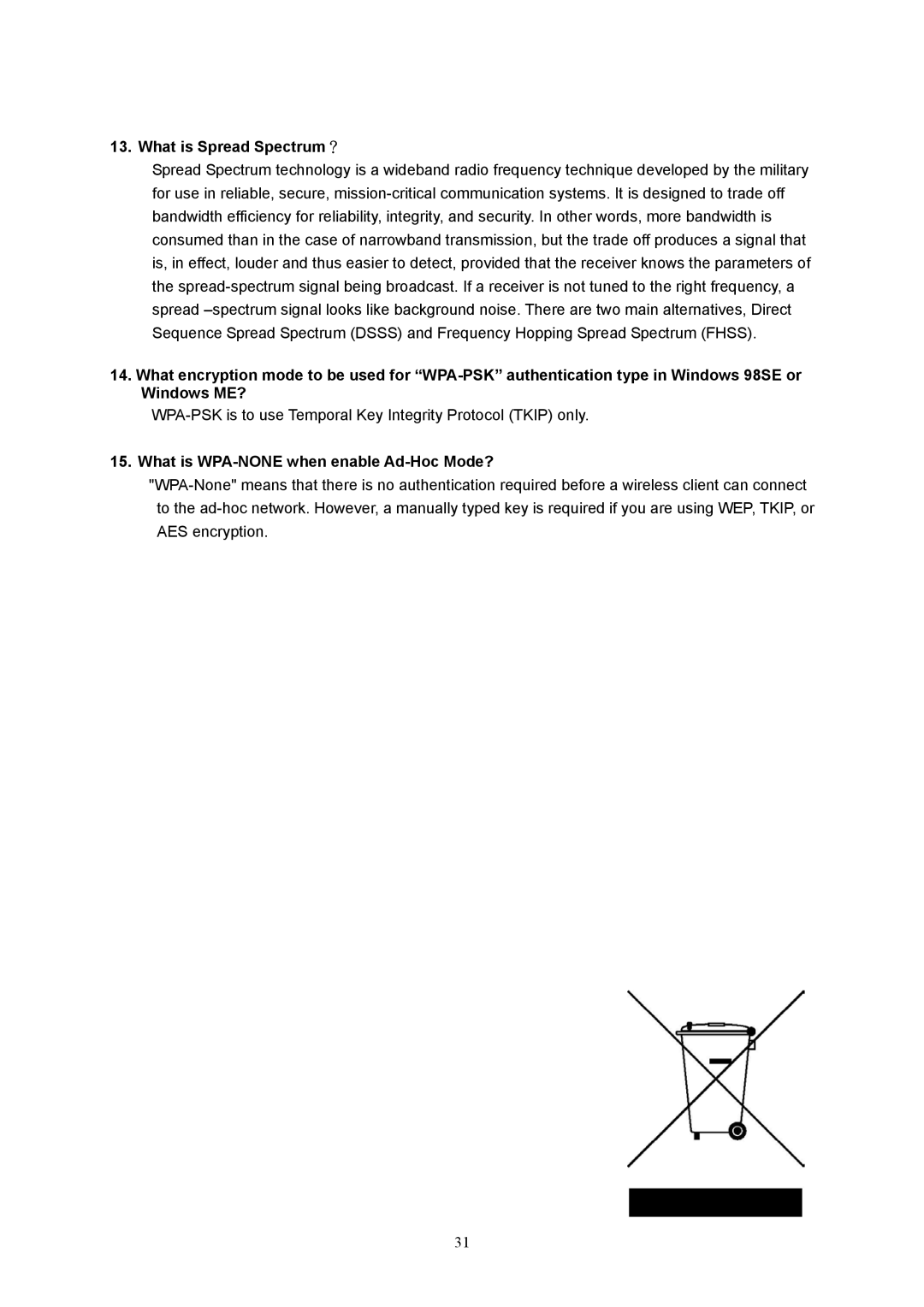13. What is Spread Spectrum?
Spread Spectrum technology is a wideband radio frequency technique developed by the military for use in reliable, secure, mission-critical communication systems. It is designed to trade off bandwidth efficiency for reliability, integrity, and security. In other words, more bandwidth is consumed than in the case of narrowband transmission, but the trade off produces a signal that is, in effect, louder and thus easier to detect, provided that the receiver knows the parameters of the spread-spectrum signal being broadcast. If a receiver is not tuned to the right frequency, a spread –spectrum signal looks like background noise. There are two main alternatives, Direct Sequence Spread Spectrum (DSSS) and Frequency Hopping Spread Spectrum (FHSS).
14.What encryption mode to be used for “WPA-PSK” authentication type in Windows 98SE or Windows ME?
WPA-PSK is to use Temporal Key Integrity Protocol (TKIP) only.
15.What is WPA-NONE when enable Ad-Hoc Mode?
"WPA-None" means that there is no authentication required before a wireless client can connect to the ad-hoc network. However, a manually typed key is required if you are using WEP, TKIP, or AES encryption.
31

